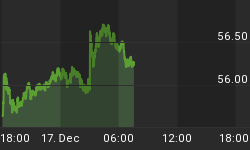Don't Fight The Fed

The longer you are involved with the financial markets, the more meaningful the expression don't fight the Fed becomes. In the simplest terms, if the Fed keeps interest rates near zero, it is next to impossible to make money in conservative investments. As long as the low-rate pledge is in place, investment capital will tend to gravitate toward risk in the search of positive returns. From The Wall Street Journal:
Federal Reserve Chairwoman Janet Yellen left markets comforted and reassured about continued low interest rates after a speech that emphasized her focus on low inflation and economic slack. Wednesday's remarks, coming in her third major address in the past month, followed an eventful first policy meeting in March that left some investors worried the central bank under her leadership might be inching toward higher rates sooner than expected. Ms. Yellen studiously sought to keep the central bank's interest-rate options open in the speech before the Economic Club of New York. "Because the course of the economy is uncertain, monetary policy makers need to carefully watch for signs that it is diverging from the baseline outlook and then respond in a systematic way," she said.
Fed Still Thinks Weather Was To Blame
As noted on April 2, stock market corrections almost invariably are kicked off by economic or geopolitical concerns. The recent bipolar activity in the stock and bond markets was due in part to a soft patch of economic data. Janet Yellen addressed that topic Wednesday. From CNBC:
"In recent months, some indicators have been notably weak, requiring us to judge whether the data are signaling a material change in the outlook," Yellen said. "The unusually harsh winter weather in much of the nation has complicated this judgment, but my FOMC colleagues and I generally believe that a significant part of the recent softness was weather related."
Resource Utilization Justifies Low Rates

The Federal Reserve is charged with a dual mandate, which includes "fostering maximum employment." While unemployment has come down, so has the labor participation rate. Yellen cited economic slack and idle workers as justification to keep interest rates suppressed. From The New York Times:
Even as a number of indicators point to better economic times ahead, the chairwoman of the Federal Reserve, Janet L. Yellen, reiterated on Wednesday that she expected interest rates to remain very low until the recovery is on a more secure footing and the American economy is more fully involving available workers and other resources.
Investment Implications - Lines In The Sand
We outlined the economic rationale for monitoring the strength of industrial stocks on April 4. Investors would be showing renewed confidence in the wake of Yellen's remarks if their buying conviction can push the Dow to a new weekly closing high. The zig-zag look of the Dow is indicative of investor confusion. During periods of low conviction and indecisiveness, it can be helpful to draw some lines in the risk-reward sand. For example, one might take a more measured approach redeploying cash as long as the Dow remains below 16,478. If and when a weekly close is printed above 16,478, redeployment confidence could be ratcheted up a notch. The weekly close printed below 16,478 at 16,408.

We entered the week with a fence-sitting mix of stocks (SPY), bonds (TLT), and cash. Given the still uncertain outlook for the economy and Fed policy, along with still shaky technicals, we made no moves this week. If the Dow pushes to a new high and the S&P 500 can clear 1,870, we will most likely increase our exposure to stocks. Possible buy candidates include dividend stocks (DVY), broad U.S. stock exposure (VTI), industrials (XLI), and energy stocks (XLE).
Frustrated By Stocks This Week?
This week was unpleasant for many investors, which prompted the strategy tweet below:

Weekends are a good time to review investment risk management strategies. On March 29 we noted if an approach or system can manage to avoid the pitfalls below, the odds of successfully navigating though the next crisis should improve:
- You think you know what is going to happen next.
- Your plan is not flexible enough.
- Failing to understand the strengths and weaknesses of technical analysis.
- Government and central bank intervention.
- Economic turnaround.
Heading into this week, the markets looked extremely vulnerable to additional downside. During the week, instead of correcting, stocks yo-yoed back up. The five points above applied to the past week of trading. The Fed was a big part of the turnaround in stocks (central bank intervention). We also saw some favorable economic numbers, such as the better than expected Philadelphia Fed Survey released Thursday. The five points above, especially flexibility, will be important next week as well.















